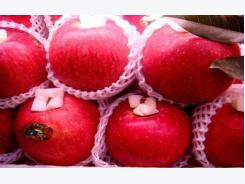Too many loopholes seen in rings for pigs

The Phùng Khánh Ngân pig farm in Củ Chi District is certified by the HCM City Veterinary Sub-department as free of animal diseases. — VNA/VNS Photo Mạnh Linh
HCM CITY — A plan to better regulate the pork industry with identification rings at several stages has shown up glaring loopholes, but the city is determined to persist with the effort.
Although it’s only about two weeks since the plan began implementation, several problems have cropped up, a Tuổi Trẻ (Youth) report says.
The rings are supposed to help track the origin and journey of pork from the farm to the wholesale markets, from the wholesale markets to retail markets, and from retail markets to consumers.
Each pig at breeding farms will wear two yellow rings that contain an electronic stamp on their legs. The stamp will record information about the farms and the pigs’ growing process. Farmers are responsible for activating the QR code on the stamp to start recording the information.
When the pigs are out of the farm and delivered by traders to slaughterhouses, an orange ring will be attached to their containers, recording information about the traders and the containers.
When they arrive at the slaughterhouse, quarantine staff will check and attach the third ring (blue) to pigs that meet hygiene and food safety standards. Only the pigs with at least two rings on their legs will be eligible to enter the wholesale market.
However, several traders say they only attach the rings to the pigs after they get out of the slaughterhouse, not from the farms.
The report quotes Ngô Doanh of Đồng Nai Province as saying he can’t track the farms where the pigs were raised though he has put 200 rings on the pigs himself. (The rings are sold to traders because not enough farmers have registered to be part of the initiative.)
“It’s hard. Each time, I have to collect pigs from dozens of households. I only put rings on the pigs after they leave the slaughterhouses, and have all been mixed up, so it’s impossible to tell which pig comes from where,” he said.
Lực, a staff of the Nghĩa Hưng slaughterhouse in Long An Province, said being able to distribute a large number of rings does not mean success in tracing their origins.
“Distribution units once sold 60,000 rings in four days,” he said. “But the majority of traders buy the rings, put them on their pigs and take them away immediately without activating their QR codes.
“I wonder how authorities can track the food origin with such loopholes,” he said.
Trần Quang Thái, head of Đồng Nai Province’s Sub-department of Animal Health, said that tracing the pigs’ origin does not necessarily improve the pork’s quality.
Current regulations allow quarantine-certified, sealed containers of pork to enter the markets, so “it is unfair and in defiance of regulations to ban the meat from entering the markets just because it lacks the rings,” he said.
Nguyễn Trí Công, chairman of the Đồng Nai Livestock Association, said he was worried that the initiative would cause farmers more trouble, as it increases their costs. About VNĐ6,000-7,000 (20-30 US cents) each has to be spent on buying the rings and VNĐ30,000 ($1.3) for doing paperwork and procedures for each pig.
“It is more urgent that the management of pig farms and their food resources is tightened, including imposing strict measures against the use of banned substances in raising poultry and livestock.”
For the consumer
While acknowledging the “initial obstacles,” Nguyễn Ngọc Hoà, deputy director of the HCM City Department of Industry and Trade, said that city is determined to implement the initiative.
However, he acknowledged that nearby localities are not obligated to do so.
“It is ineffective to try to raise food quality by relying solely on farmers’ awareness and responsibility,” he said. “We need rules and regulations.”
At the moment, the rings are being sold to traders since too few farmers registered to participate in the initiative, Hoà said. However, traders are required to put in names and addresses of farmers from whom they buy the pigs.
“The city will rely on such information to track the pigs’ origin and persuade more farmers to participate,” he said.
For the time being, the city will still allow pigs without rings to enter markets, to give localities time to adjust to the new regulations, he said, adding that fines will be imposed in the long term.
After the technology is applied well from farms to slaughterhouses, the city will implement it in the next stage, in the process of delivering the meat from wholesale markets to retail markets, Hoà said.
Only the pigs with rings will be allowed to leave the wholesale markets and enter retail markets, he added.
Có thể bạn quan tâm
Phần mềm

Phối trộn thức ăn chăn nuôi

Pha dung dịch thủy canh

Định mức cho tôm ăn

Phối trộn phân bón NPK

Xác định tỷ lệ tôm sống

Chuyển đổi đơn vị phân bón

Xác định công suất sục khí

Chuyển đổi đơn vị tôm

Tính diện tích nhà kính

Tính thể tích ao hồ




 US$2 million expenditure on fruit imports per day
US$2 million expenditure on fruit imports per day  Vietnam’s fruit and vegetable imports and export considerably…
Vietnam’s fruit and vegetable imports and export considerably…